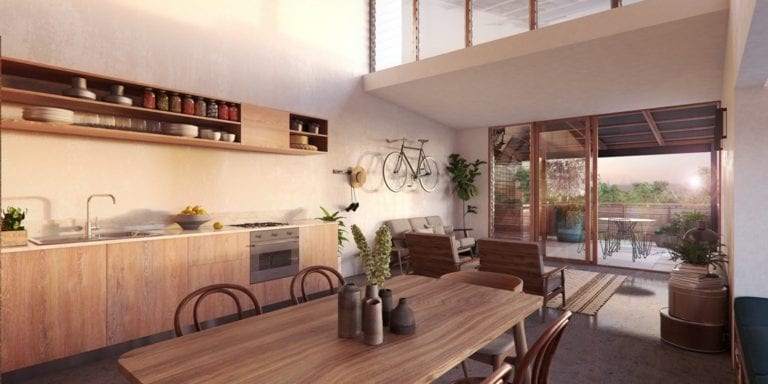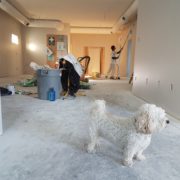Live/work space; a niche going through a revival
Business owners living above their shops is nothing new. From Europe to Asia, the likes of butchers, leather goods workers, and produce sellers have lived in apartments above their businesses. Australia is catching on (again), and work/live/play spaces are once again on the rise.
Why so slow on the uptake?
Zoning is the major issue. One roadblock that stops business owners from living above their workspace is that their business property is in a commercial zone, not a residential one.
In Australia, there are four major zones: commercial, residential, industrial, and agricultural. There are subzones within each category. The live/work way of life was a lot simpler before zoning laws came into the mix. But it can be done, as seen in the example below.
Habitat
Byron Bay is known for its creative spirit. It’s the home of artists, designers, chefs, and those who have turned their craft into a living. Rather than commute to work, Habitat offers established businesses and start-ups the opportunity to live and work within walking distance. In this case, right downstairs.
Developer Brendan Saul saw the gap for an affordable, sustainable live and work space. Habitat was inundated with enquiries and officially opened its doors in late 2017 and hosts the likes of florists, clothing retailers, cafes, restaurants, and gyms. It opened a communal workspace in 2018.

It is possible
Governments have also gotten on the live/work trend, providing affordable living spaces for creatives and entrepreneurs wanting to take risks.
When you decide to take the plunge and invest in a live/work space, make sure you reach out to a professional. Brokers and real estate agents will have the zoning knowledge and will guide you through the process of building your own space, if you so desire, to lease.
Get more advice below:
Ideal tenants for a commercial property
Read this to improve the cash flow from your rental property












